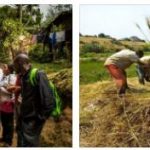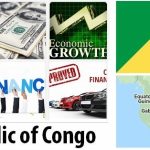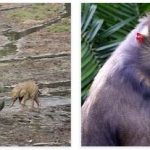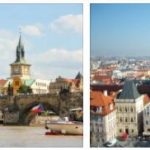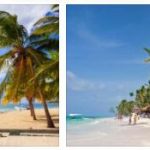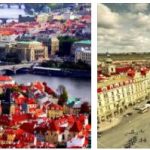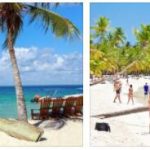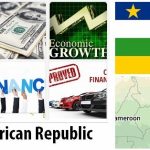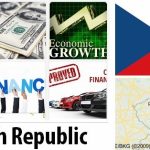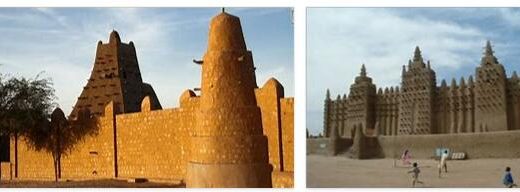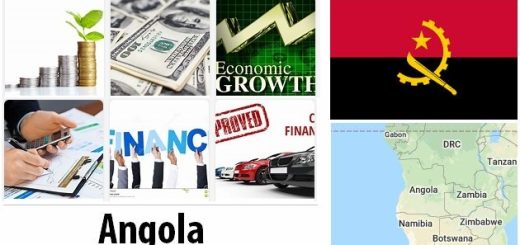Democratic Republic of the Congo Overview
Animals and Plants
What is growing there?
Much of the Democratic Republic of the Congo is covered in tropical rainforest. This is the largest rainforest in Africa and the second largest in the world (after the Amazon rainforest in South America). It rains here between nine and twelve months of the year. Tall trees such as teak or mahogany grow here. Oil palms, bamboo, strangler figs and orchids can also be found here.
In the south, the rainforest turns into a moist savannah. Here rain falls in seven to nine months and there is a dry season. More grasses grow here.
Which animals live here?
Biodiversity is quite high in the Democratic Republic of the Congo because so much rainforest grows here – and there are also many animal species. However, many of them are critically endangered, especially from hunting. Several national parks have been set up to protect them. You can meet the pretty okapis in the Okapi Wildlife Reserve – and only here in the world in the wild.
The country’s 415 species of mammals also include great apes, namely the mountain gorilla and eastern lowland gorilla species, as well as the common chimpanzee and bonobo chimpanzee species. Bonobos are also called dwarf chimpanzees. They, too, can only be found in freedom in the DR Congo. Bongos, forest elephants, hippos, vervet monkeys, pangolins, forest buffalo, giant forest pigs and duikers are other inhabitants of the rainforest.
Lions, rhinos, elephants, zebras, jackals and hyenas are more at home in the savannah than in the rainforest. Leopards live all over the country.
Of course, there are not only mammals in the Democratic Republic of the Congo, but also many birds. Do you know the glutton? This stork is at home here, for example. You can also find the cattle egret, the Congo peacock, the Brubru strangler and thousands more birds! Fish and butterflies are just as numerous.
Economy
Poor, rich country
Although the Democratic Republic of the Congo is rich in natural resources, the country is poor. Yes, it is even one of the poorest countries in the world. The prosperity of all countries is measured every year. This then results in a list, the Human Development Index, which means in German: table for human development. The DR Congo ranks 179th out of 189 countries.
Why is that? The country has been politically unstable since independence in 1960. There are repeated civil wars that devastate the country. Another big problem is corruption. There are few affluent people in the country, but 77 percent of the population live below the international poverty line. That means that someone has the equivalent of only 1.90 dollars a day.
Agriculture
Agriculture makes up 20 percent of the country’s total economic output. Coffee, sugar cane, palm oil, rubber, rice, cotton, cocoa, quinoa, manioc and other root vegetables, plantains, peanuts, corn, bananas, pineapples and various other tropical fruits are grown.
In many cases, however, agriculture is carried out on small fields – for personal use. Only the surpluses are then sold on the market. This is called subsistence farming. The most important product grown on large plantations is coffee. It is the most important export product for agriculture, followed by rubber.
Only three percent of the country’s area is used for agriculture. The harvest is not enough for their own population. You have to buy food from other countries.
What is coltan
Coltan is an ore from which tantalum is extracted. This in turn is needed in electronic devices such as cell phones. The mining in the Congo leads to the destruction of the rainforests and great pollution for the environment. Rebels promote it without government supervision. In addition, children are often used as workers here. Coltan is therefore also classified as a conflict resource. Some people are demanding that it no longer be bought from the DR Congo because it ends up funding the war.
Mining
The DR Congo is one of the most resource-rich countries in the world. Cobalt, copper, oil, diamonds, gold, manganese, zinc, lead and tin are mined. The DR Congo is the world’s largest producer of cobalt and the ninth largest of copper.
Coltan is particularly popular abroad because this ore is needed for electronic devices. Some of the mining takes place in small-scale mining. This means that no machines are used, everything is dismantled by hand. This is very stressful for the workers, but also not good for the environment because many toxins get into nature.
Most of the natural resources are in the east of the country. There is still fighting over these deposits to this day, because the money from the sales was wanted by both the government and the troops rebelling against them.
Everyday Life
What is life like in the DR Congo?
Can you imagine life in the Democratic Republic of the Congo? Certainly a lot would be different than in Germany. Most of all, it would be much warmer! There are also no seasons and you would never have seen snow if you had been born here! For more articles on Democratic Republic of the Congo and Africa, please visit programingplease.
You would probably have a lot of siblings. The food would often be scarce. Getting from one place to another is also very different from ours. Not all roads in the country are tarred by a long way. The traffic in the large capital Kinshasa is often chaotic and there are also many accidents. In 2014, two traffic robots were set up here. They are supposed to regulate the traffic at two huge, blind intersections.
The supply of electricity and water is often problematic. Then there is simply no electricity and no water flows either. The sanitation is also often poor. Only 20 percent of the population even has sanitary facilities, i.e. toilets.


